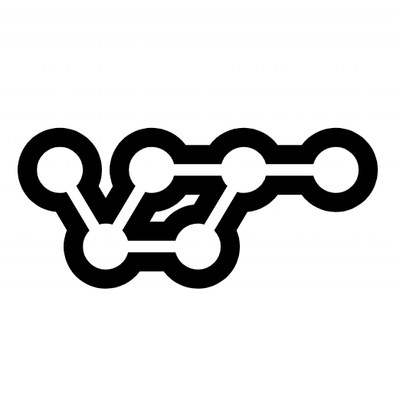
Security News
vlt Launches "reproduce": A New Tool Challenging the Limits of Package Provenance
vlt's new "reproduce" tool verifies npm packages against their source code, outperforming traditional provenance adoption in the JavaScript ecosystem.
nativescript-facebook
Advanced tools
NativeScript plugin, wrapper of native Facebook SDK for Adroid and iOS.


NativeScript plugin, wrapper of native Facebook SDK for Android and iOS.

tns plugin add nativescript-facebook
No additional configuration required!
Update Info.plist file (app/App_Resources/iOS/Info.plist) to contains CFBundleURLTypes like below:
<?xml version="1.0" encoding="UTF-8"?>
<!DOCTYPE plist PUBLIC "-//Apple//DTD PLIST 1.0//EN" "http://www.apple.com/DTDs/PropertyList-1.0.dtd">
<plist version="1.0">
<dict>
...
<key>CFBundleURLTypes</key>
<array>
<dict>
<key>CFBundleURLSchemes</key>
<array>
<string>fb{facebook_app_id}</string>
</array>
</dict>
</array>
</dict>
</plist>
Make sure you replaced {facebook_app_id} with your Facebook App Id. More info regarding how to obtain a Facebook App Id can be found here.
Call init of nativescript-facebook module on application launch.
import * as application from 'application';
import { init } from "nativescript-facebook";
application.on(application.launchEvent, function (args) {
init("{facebook_app_id}");
});
application.start({ moduleName: "login-page" });
Add Facebook login button as simple as adding a Facebook:LoginButton tag in your view. Then you can define login event handler name. In the example below - onLogin.
<Page xmlns="http://schemas.nativescript.org/tns.xsd"
xmlns:Facebook="nativescript-facebook"
loaded="pageLoaded" class="page">
...
<Facebook:LoginButton login="{{ onLogin }}"></Facebook:LoginButton>
...
</Page>
Implement onLogin event handler in your view-model. It receives an argument from type LoginEventData. Currently LoginEventData object has 2 properties: error and loginResponse. loginResponse is an object that consists of 1 property - token that keeps the facebook access token which will be used for further authentications. Ideally we can add some other properties here in the future such as Facebook user id.
import { Observable } from 'data/observable';
import { Facebook:LoginButton } from "nativescript-facebook";
export class LoginViewModel extends Observable {
onLogin(eventData: LoginEventData) {
if (eventData.error) {
alert("Error during login: " + eventData.error.message);
} else {
console.log(eventData.loginResponse.token);
}
}
}
Add a button and define a tap event handler in your login view.
<Page xmlns="http://schemas.nativescript.org/tns.xsd"
xmlns:Facebook="nativescript-facebook"
loaded="pageLoaded" class="page">
...
<Button tap="{{ login }}" text="Log in (custom)"></Button>
...
</Page>
In the view model implement the tap event handler in this case login method. It just has to call the login method that comes from the plugin. In the example below the login method from the plugin is imported as fbLogin.
BEST PRACTICE: Import only the methods that you need instead of the entire file. It is crucial when you bundle your app with webpack.
import { Observable } from 'data/observable';
import { login as fbLogin } from "nativescript-facebook";
export class LoginViewModel extends Observable {
login() {
fbLogin((err, fbData) => {
if (err) {
alert("Error during login: " + err.message);
} else {
console.log(fbData.token);
}
});
}
}
Add Facebook logout button as simple as adding a Facebook:LoginButton tag in your view. Then you can define logout event handler name. In the example below - onLogout.
<Page xmlns="http://schemas.nativescript.org/tns.xsd"
xmlns:Facebook="nativescript-facebook"
loaded="pageLoaded" class="page">
...
<Facebook:LoginButton logout="{{ onLogout }}"></Facebook:LoginButton>
...
</Page>
Implement onLogout event handler in your view-model.
import { Observable } from 'data/observable';
export class HomeViewModel extends Observable {
onLogout() {
console.log("logged out");
}
}
Add a button and define a tap event handler in your view. In this case - logout
<Page xmlns="http://schemas.nativescript.org/tns.xsd"
xmlns:Facebook="nativescript-facebook"
loaded="pageLoaded" class="page">
...
<Button tap="{{ logout }}" text="Log out (custom)"></Button>
...
</Page>
In the view model implement the tap event handler in this case logout method. It just has to call the logout method that comes from the plugin. In the example below the logout method from the plugin is imported as fbLogout.
import { Observable } from 'data/observable';
import { logout as fbLogout } from "nativescript-facebook";
export class LoginViewModel extends Observable {
logout() {
fbLogout(() => {
console.log("logged out");
});
}
}
Call init of nativescript-facebook module on application launch.
...
import * as application from 'application';
import { NativeScriptModule } from "nativescript-angular/nativescript.module";
let nsFacebook = require('nativescript-facebook');
application.on(application.launchEvent, function (args) {
nsFacebook.init("{facebook_app_id}");
});
...
Add Facebook login button as simple as adding a Facebook:LoginButton tag in your component html file. Then you can define login event handler name. In the example below - onLogin. Bare in mind the $event argument.
pages/login/login.component.html
<StackLayout>
<FacebookLoginButton (login)="onLogin($event)"></FacebookLoginButton>
</StackLayout>
Implement onLogin event handler in your component. It receives an argument from type LoginEventData. Currently LoginEventData object has 2 properties: error and loginResponse. loginResponse is an object that consists of 1 property - token that keeps the facebook access token which will be used for further authentications. Ideally we can add some other properties here in the future such as Facebook user id.
pages/login/login.component.ts
import { Component } from "@angular/core";
import * as Facebook from "nativescript-facebook";
@Component({
selector: "login",
templateUrl: "login.component.html",
})
export class LoginComponent {
onLogin(eventData: Facebook.LoginEventData) {
if (eventData.error) {
alert("Error during login: " + eventData.error);
} else {
console.log(eventData.loginResponse.token);
}
}
}
Add a button and define a tap event handler in your login component html.
pages/login/login.component.html
<StackLayout>
<Button text="Login Button (custom)" (tap)="login()"></Button>
</StackLayout>
In the component implement the tap event handler in this case login method. It just has to call the login method that comes from the plugin.
pages/login/login.component.ts
import { Component } from "@angular/core";
import * as Facebook from "nativescript-facebook";
@Component({
selector: "login",
templateUrl: "login.component.html",
})
export class LoginComponent {
login() {
Facebook.login((error, fbData) => {
if (error) {
alert("Error during login: " + error.message);
} else {
console.log(fbData.token);
}
});
}
}
Add Facebook logout button as simple as adding a Facebook:LoginButton tag in your component html file. Then you can define logout event handler name. In the example below - onLogout. Bare in mind the $event argument.
pages/home/home.component.html
<StackLayout>
<FacebookLoginButton (logout)="onLogout($event)"></FacebookLoginButton>
</StackLayout>
Implement onLogout event handler.
import { Component } from "@angular/core";
import * as Facebook from "nativescript-facebook";
@Component({
selector: "home",
templateUrl: "home.component.html",
})
export class HomeComponent {
onLogout(eventData: Facebook.LoginEventData) {
if (eventData.error) {
alert("Error during login: " + eventData.error);
} else {
console.log("logged out");
}
}
}
Add a button and define a tap event handler in your view. In this case - logout
pages/home/home.component.html
<StackLayout>
<Button text="Log out (custom)" (tap)="logout()"></Button>
</StackLayout>
In the component implement the tap event handler in this case logout method. It just has to call the logout method that comes from the plugin. In the example below the logout method from the plugin is imported as fbLogout.
import { Component } from "@angular/core";
import { logout as fbLogout } from "nativescript-facebook";
@Component({
selector: "home",
templateUrl: "home.component.html",
})
export class AppComponent {
logout() {
fbLogout(() => {
console.log("logged out");
});
}
}
The callback that have to be provided to Facebook.login method receives 2 arguments: error and login response object. Login response object has the following structure:
| Property | Description |
|---|---|
| token | access token which will be used for further authentications |
Once the Facebook access token is retrieved you can execute Graph API requests. In the example below after successful login, the access token is stored in application settings. And then on the home view it is retrieved and 2 Graph API calls are executed.
export class HomeComponent {
accessToken: string = appSettings.getString("access_token");
userId: string;
username: string;
avatarUrl: string;
constructor(private ref: ChangeDetectorRef, private navigationService: NavigationService) {
// Get logged in user's info
http.getJSON(config.FACEBOOK_GRAPH_API_URL + "/me?access_token=" + this.accessToken).then((res) => {
this.username = res.name;
this.userId = res.id;
// Get logged in user's avatar
// ref: https://github.com/NativeScript/NativeScript/issues/2176
http.getJSON(config.FACEBOOK_GRAPH_API_URL + "/" + this.userId + "/picture?type=large&redirect=false&access_token=" + this.accessToken).then((res) => {
this.avatarUrl = res.data.url;
this.ref.detectChanges();
}, function (err) {
alert("Error getting user info: " + err);
});
}, function (err) {
alert("Error getting user info: " + err);
});
}
This sample is part of the demo apps and can be observed here for Nativescript Code and here for NativeScript + Angular.
Check out release notes [here] (https://github.com/NativeScript/nativescript-facebook/releases)
Check out our FAQ section here.
Check out our Contribution guide here.
FAQs
NativeScript plugin, wrapper of native Facebook SDK for Android and iOS.
We found that nativescript-facebook demonstrated a not healthy version release cadence and project activity because the last version was released a year ago. It has 6 open source maintainers collaborating on the project.
Did you know?

Socket for GitHub automatically highlights issues in each pull request and monitors the health of all your open source dependencies. Discover the contents of your packages and block harmful activity before you install or update your dependencies.

Security News
vlt's new "reproduce" tool verifies npm packages against their source code, outperforming traditional provenance adoption in the JavaScript ecosystem.

Research
Security News
Socket researchers uncovered a malicious PyPI package exploiting Deezer’s API to enable coordinated music piracy through API abuse and C2 server control.

Research
The Socket Research Team discovered a malicious npm package, '@ton-wallet/create', stealing cryptocurrency wallet keys from developers and users in the TON ecosystem.